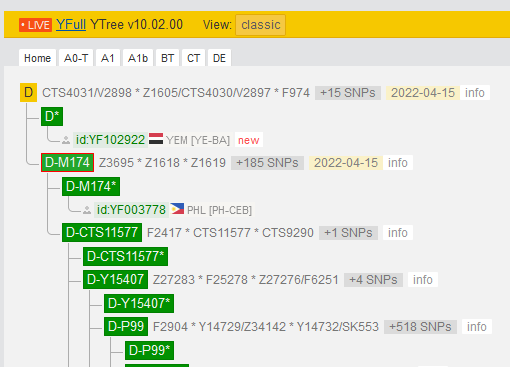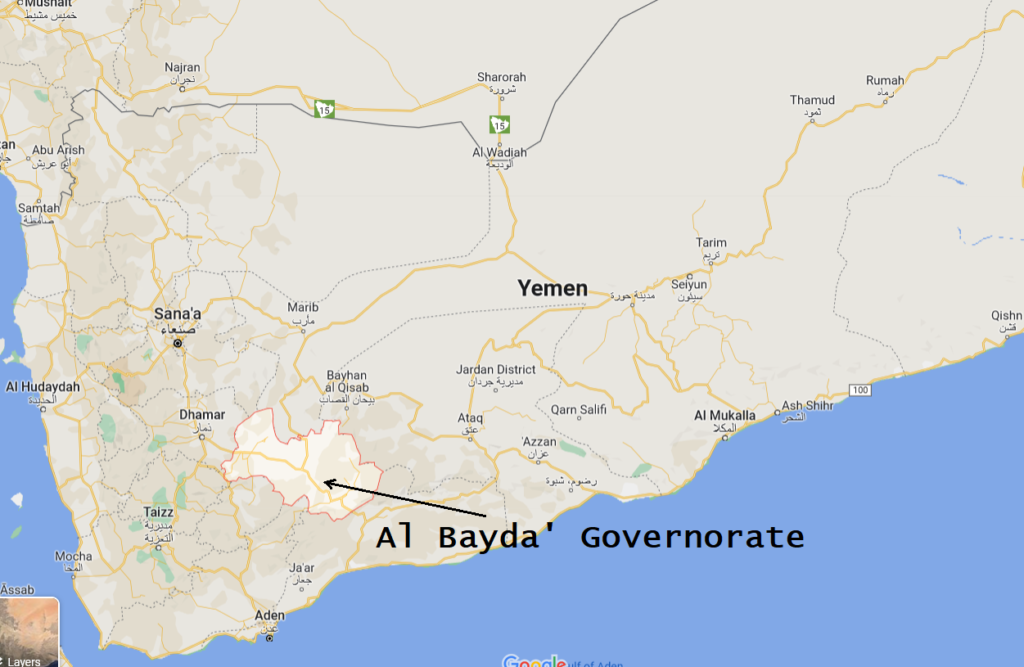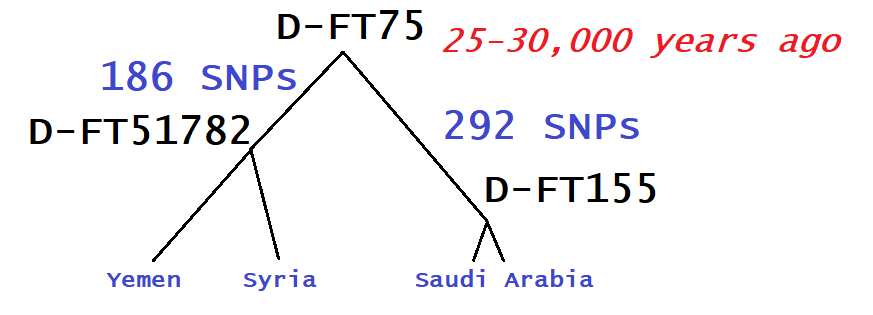Someone in the YFull Facebook group alerted me yesterday to a new split in haplogroup D on the YFull tree.

A man from Al Bayda', Yemen has split D only 18 SNPs after it split from DE about 65,200 years ago, according to the YFull estimate.

I decided to check against the FTDNA haplotree and it turns out that this split is not a new discovery.
On FTDNA this parallel line is known as D-FT75 and consists of 490 SNPs. This is nearly double that of sibling, D-M174, with 244 on their tree.
I leave it to others to estimate age of lineages by SNPs because I think this is an ever-evolving science, requiring constant and extensive re-calibration, that I am not focusing on. But in this case I will do a very basic back-of-the-envelope computation to get a rough idea.
If a 244 SNP bottleneck on FTDNA equates to 18,700 years on YFull, in the case of their old D, now called D-M174 on FTDNA, we could extrapolate that a 490 SNP bottleneck would take about 37,500 years.
So a simplistic estimate might yield that this new branch of D-FT75 would have a TMRCA of about 27,500 years ago.
Origin of Approximately 25-30,000 year old Haplogroup D-FT75
By looking at the more developed phylogeny of D-FT75 on FTDNA, I notice about a dozen or so samples with no country. They didn't indicate "unknown", simply a 0 shows up in the counts under a branch.
This indicates about a dozen scientific samples that YFull could add to their tree (if they can access them) and provide the geographic location of the tester, if known.
I am not going to look for these samples myself but I can provide a quick analysis of the samples that are geolocated under D-FT75 on the FTDNA haplotree.
Only looking at the phylogeny of geolocated samples, we have this:

Knowing how many private SNPs each of these samples has would help us understand how old their are. Hopefully they will do the YFull analysis so researchers will get a clearer picture and TMRCA estimates that are updated every month.
In my opinion it is too great of a burden for researchers who may be interested in dozens of branches to calculate their own TMRCAs on an ongoing basis as some FTDNA apologists advise, especially given that a professional and affordable option of YFull analysis exists.
To the question of origin of this D-FT75, given that this new branch has, so far, exclusively Middle Eastern origin, one could assume that, unless all these men coincidentally migrated later to this area, that their ancestor had been living there about 25-30,000 years ago, however old the D-FT75 TMRCA is calculated from reliable methods by people with the complete data (private SNPs) to be.
Implication for origin of DE
The simplest explanation, that I am not the first to observe, is that these men in D-FT75 represent a lineage that stayed in Arabia or nearby while their sibling D-M174 migrated to Southeast Asia along the southern coasts of Asia by at least 46,500 years ago.
It is important to keep in mind that if one wants to consider D-FT75 in the Middle East as a possible back-migration from East Asia, then you must either consider that D itself formed in East Asia or that D formed elsewhere but that these two lines coincidentally migrated to East Asia together.
We have strong circumstantial evidence for D-M174 in southeast Asia since 46,500 years ago. Other East Asian haplogroups C and K2 have TMRCAs estimated at 48,800 and 45,400 years ago. Since there is no other haplogroup with strong evidence of having migrated to East Asia before this (that I am aware of), I would consider it a very big stretch to assume that D would have been able to achieve this in just 18 SNPs from the DE ancestor that likely lived between Horn of Africa / Middle East around 65,200 years ago.
So if one wants to consider an alternate hypothesis of D-FT75 having back-migrated to Arabia from East Asia, they would need to assume that both D-FT75 and D-M174 happened to co-migrate to East Asia (not a huge stretch), but then later, sometime before 25-30,000 years ago, D-FT75 migrated back to Arabia leaving no survivors anywhere to the east.
There is also the possibility that the migration of the 25-30,000 year distantly related branches of D-FT75 men coincidentally took them to the Middle East at an even later date, given the higher than average sample rate of Saudi Arabia, Yemen and even Syria.
As the parameters shift based on newer data, one can continue to evaluate the likelihood of these alternate possibilities, though I would argue that the latter (back-migrations from the east) require additional assumptions than the former (remnant from the first migration out of Africa that didn't go so far as his siblings).
Good analysis Hunter. I would like to add that the the other ftdna samples are African Americans, and Nigerians from a study.
Please have a look on this video containg ftdna’s announcement of the branch (40:30)
https://youtu.be/f_IPIPVALnE
Thanks for letting me know about this video. I wish FTDNA with all the millions they are making from this business could at some point go to the trouble to put the relevant geographic markers from scientific samples on their public tree…